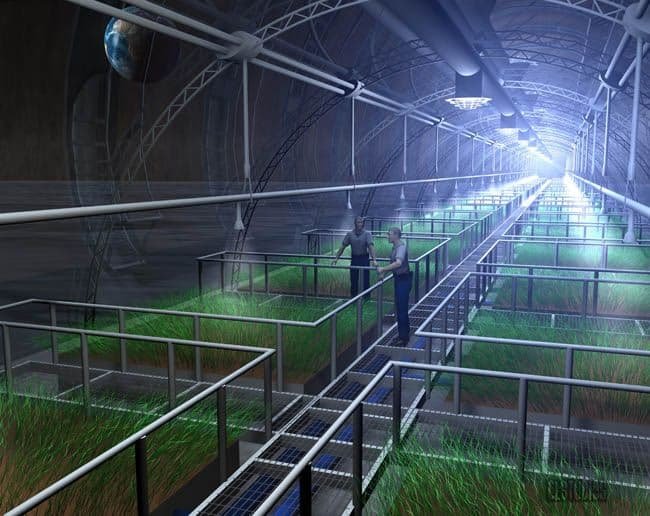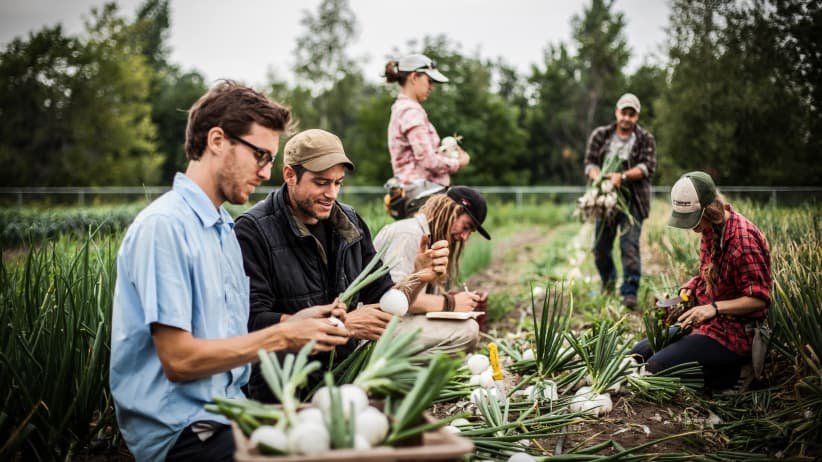Welcome to the future of agriculture! In this article, we will explore the fascinating world of space farming and how it is revolutionizing the way we grow food. Whether you are an aspiring astronaut or simply curious about the possibilities of farming in space, this article will provide you with all the information you need. So, fasten your seatbelts and get ready to embark on a journey to the stars!
1. What is Space Farming?
Space farming, also known as astroculture, is the practice of growing plants and crops in outer space. It involves creating controlled environments that mimic the conditions necessary for plant growth on Earth, such as temperature, humidity, and light. The goal of space farming is to provide astronauts with fresh food during long-duration space missions, as well as to explore the potential for sustainable food production on other planets.
2. Challenges of Space Farming
While the idea of growing food in space may sound exciting, it comes with its fair share of challenges. Here are some of the main obstacles that scientists and astronauts face when it comes to space farming:
- Microgravity: In space, plants experience microgravity, which affects their growth and development. Without the force of gravity, plants grow in all directions, making it difficult for them to establish a stable structure.
- Resource Limitations: Space missions have limited resources, including water, energy, and nutrients. Finding efficient ways to recycle and reuse these resources is crucial for sustainable space farming.
- Space Constraints: Spacecraft and space stations have limited space, so it is essential to develop compact and efficient farming systems that can maximize food production in small areas.
- Radiation: Space is filled with radiation, which can be harmful to both plants and humans. Protecting crops from radiation is a significant concern in space farming.
- Self-Sufficiency: To sustain long-duration space missions, it is crucial to develop farming systems that can operate autonomously without constant human intervention.
3. Benefits of Space Farming
Despite the challenges, space farming offers numerous benefits that make it a worthwhile endeavor. Here are some of the advantages of growing food in space:
- Food Security: Space farming reduces the reliance on resupply missions from Earth, ensuring a steady supply of fresh food for astronauts during long-duration missions.
- Psychological Well-being: The ability to grow plants in space provides astronauts with a connection to nature and a sense of normalcy, which can have a positive impact on their mental health.
- Sustainable Exploration: Space farming is a crucial step towards achieving sustainable space exploration. By learning how to grow food in space, we can reduce the resources needed for future missions and increase our chances of long-term space habitation.
- Scientific Research: Studying plant growth in space can provide valuable insights into how plants adapt to different environments and can help us develop more resilient crops on Earth.
- Inspiration: Space farming captures the imagination of people around the world and inspires future generations to pursue careers in science, technology, engineering, and mathematics (STEM).
4. FAQs
Q: Can plants grow without sunlight in space?
A: Yes, plants can grow without sunlight in space. Scientists have developed artificial lighting systems that provide the necessary spectrum of light for plant growth.
Q: How do astronauts water plants in space?
A: Watering plants in space is a delicate process. Astronauts use a specialized watering system that delivers water directly to the roots of the plants without creating a mess in the microgravity environment.
Q: What types of crops can be grown in space?
A: A variety of crops can be grown in space, including lettuce, radishes, zinnias, and even flowers like sunflowers. These crops have been selected for their nutritional value, growth rate, and ability to withstand the challenges of space.
Q: How long does it take for plants to grow in space?
A: The growth rate of plants in space can vary depending on the crop and the specific conditions. However, most crops can be harvested within a few weeks to a few months.
Q: Are there any space farming experiments happening right now?
A: Yes, there are several ongoing space farming experiments. For example, NASA’s Veggie Plant Growth System is currently being used on the International Space Station to grow lettuce and other leafy greens.
5. Conclusion
As we reach the end of our journey through the world of space farming, here’s a fun fact for you: Did you know that the first plant to flower in space was a zinnia? In 2016, astronauts aboard the International Space Station successfully grew and bloomed zinnias, marking a significant milestone in space farming.
Space farming is not just about growing food in space; it is about pushing the boundaries of human exploration and paving the way for a sustainable future beyond Earth. By overcoming the challenges and harnessing the benefits of space farming, we are one step closer to becoming an interplanetary species. So, keep looking up at the stars and dreaming of a future where space farming is a reality!
Originally posted 2023-07-22 16:28:15.




